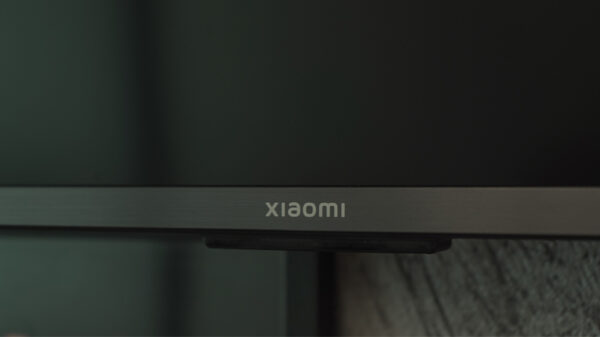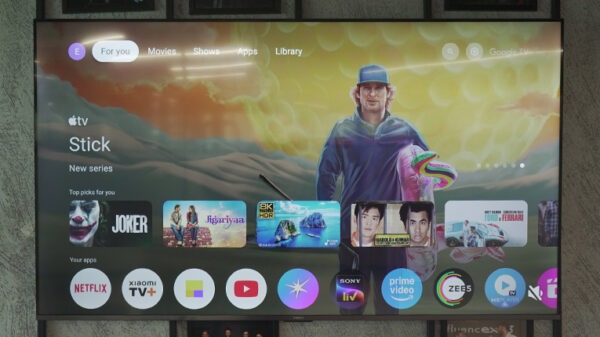Verdict
Big on Features, Light on Price
The Xiaomi X Pro QLED 65-inch TV punches far above its weight. For Rs 64,999, it brings together a bright, accurate QLED panel, solid audio performance, meaningful smart features, and wide HDR format support. Sure, it’s not perfect. Its 2GB of RAM feels like a bottleneck waiting to happen after a year or two, and native 120Hz refresh would’ve made it future-proof for gamers. But in the grand scheme, these are small compromises. If you're hunting for a feature-packed large-screen 4K TV that won’t burn a hole in your pocket.
The Good
- Vibrant 4K QLED panel
- Filmmaker Mode
- Dolby Vision & HDR10+ support
The Bad
- Only 2GB of RAM
- No native 120Hz refresh rate
- Limited bass in audio
-
Design
-
Display
-
Audio
-
Performance
-
Software
-
Remote
Xiaomi’s latest entry into the large-screen smart TV market comes wrapped in the form of the X Pro QLED 65-inch, a model that doesn’t just boast specs on paper but attempts to redefine expectations in the mid-premium budget segment.
With a vibrant QLED panel, an interesting sounding Filmmaker Mode, and support for Dolby Vision and HDR10+, this TV sets out to be a true all-rounder.
But does it live up to the hype in daily use?
Let’s find out.
Design

To start off, this is a beautiful-looking TV with minimal branding. Given its 65-inch size, it’s undoubtedly meant for living room setups, but it does ship in 55-inch and 43-inch sizes as well.
The presence of this TV dominates the room in an elegant, understated way.
And that’s all thanks to its matte black frame that’s paired with ultra-slim bezels.
These non-existent bezels convert it into a wonder pit in your wall that easily grabs your attention.
Xiaomi has ensured that the design doesn’t just stop at aesthetics.
The port layout is accessible and well-thought-out.
You get three HDMI ports (one with eARC for high-fidelity audio output), two USB 2.0 ports, Ethernet, AV input, antenna jack, and even the increasingly rare 3.5mm headphone port.
Dual-band Wi-Fi and Bluetooth ensure wireless flexibility for streaming, audio, and input devices.
Display

The heart of this TV lies in its 65-inch 4K Ultra HD QLED panel with Xiaomi’s own Vivid Picture Engine 2.
Supporting Dolby Vision and HDR10+, this screen isn’t just built for brightness and clarity; it’s designed to respect artistic intent.
Colour reproduction is impressively tuned.
Reds, blues, and greens pop with vibrancy, but without tipping into oversaturation. Xiaomi’s calibration strikes a healthy balance between cinematic appeal and realism.
Viewing angles are excellent too, with the panel maintaining contrast and colour fidelity even when viewed from the sides.
While the native refresh rate remains at 60Hz, Xiaomi’s DLG (Dual Line Gate) technology emulates 120Hz motion smoothness during fast-paced sequences, making it a surprisingly good companion for sports and casual gaming.
However, keep in mind that this trick reduces resolution slightly, when in effect, a trade-off worth noting for gamers and purists.
New to Xiaomi’s TV attributes is the Filmmaker Mode, which is intended to deliver movies exactly as the director envisioned.
This mainly means that motion smoothing, sharpening, and other post-processing effects get disabled when this mode is turned on.
The movies, hence, get shown in their original frame rates, aspect ratios, and colour settings.
This results in a more cinematic viewing experience with accurate visuals and natural motion, which makes it ideal for film enthusiasts who want to watch movies the way they were made to be seen.
Audio
Budget TVs often leave you yearning for a soundbar.
But the X Pro 65-inch is equipped with 34W stereo speakers, tuned with Xiaomi Sound. Moreover, it also supports Dolby Audio, DTS:X, and DTS Virtual:X formats.
In real-world use, the audio is loud, clear, and well-separated.
Dialogue delivery is crisp, and stereo separation during movies gives a sense of depth and engagement.
While the lower-end frequencies (bass) don’t rumble like a dedicated woofer would provide, it’s still perfectly adequate for living rooms without a soundbar setup.
Performance
Powering the smart experience is a quad-core Cortex-A55 processor, paired with a Mali-G52 MC1 GPU, 2GB of RAM, and 32GB of internal storage.
These specs may look modest on paper, especially the RAM, which feels limited by 2025 standards, but in practical usage, the interface stays reasonably responsive.
Switching between apps, casting, or launching streaming services is generally smooth, although heavy multitasking may occasionally show signs of lag.
That said, Xiaomi’s software optimisation helps keep things fluid under normal use conditions.
Software

Xiaomi’s PatchWall UI, layered over Google TV, is more than just a launcher; it’s an evolved content discovery engine.
With integrated Xiaomi TV+ (offering free live channels), Universal Search, Kids Mode with Parental Lock, and Language Universe for multilingual browsing, it transforms the dumb TV experience into a smart, culturally contextual one.
Casting support includes Apple AirPlay 2, Google Cast, and Miracast, making it convenient for users across ecosystems.
Google Assistant voice integration works reliably and responds well to natural language commands.
What sets PatchWall apart is its clean categorisation of content by genres, languages, and moods, which helps reduce the time usually spent navigating multiple OTT apps to find what you want.
Remote

Xiaomi’s redesigned remote keeps things simple but effective.
It’s slimmer, more ergonomic, and finally includes a numeric keypad that’s useful for input-heavy apps or old-school users.
Shortcuts to major streaming platforms (Netflix, Prime, YouTube, etc.) are present, and the Quick Wake function powers on the TV in under 5 seconds, which is a subtle yet impactful convenience.
Google Voice Search is integrated and works fairly well, even with regional accents, ensuring hands-free operation is not just a gimmick.


